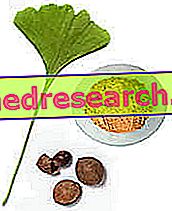Definition
Sturgeon is an acute inflammation of infectious origin, which affects the sebaceous glands located at the base of the eyelashes.
Depending on the type of sebaceous gland affected, the stye may appear both on the outside of the eyelid (external stye) and inside it (internal stye).
Causes
The stye is caused by a bacterial infection sustained by staphylococci.
The contact of dirty hands with the eyes is sufficient to contract the infection. Therefore, subjects with poor personal hygiene are exposed to a greater risk of infection.
Sharing towels with people suffering from stye can also help transmit the infection.
Furthermore, it has been observed that subjects suffering from blepharitis are at greater risk of contracting the stye.
Symptoms
The stye manifests itself as a bulge at the level of the eyelid, in which pus accumulates and which is accompanied by symptoms such as pain, a foreign body sensation in the eye, photophobia, tearing and swelling. In some cases, fever and chills may also occur.
Furthermore, the internal stye - if it is not properly treated - can evolve into chalazion.
Information on Orzaiolo - Drugs for the treatment of the Orzaiolo are not intended to replace the direct relationship between health professional and patient. Always consult your doctor and / or specialist before taking Orzaiolo - Drugs for the Orzaiolo Care.
drugs
In most cases, the stye tends to self-resolve within a few days, "bursting" by itself and causing the pus contained in it to escape. Obviously, the "pimple" must never be blown up with the hands, otherwise it would favor the propagation of the infection.
Therefore, the best thing to do is to let the stye take its course; eventually - to alleviate the symptoms - you can make hot-moist compresses.
In addition, people with stye should keep their face and eyes clean, always wash their hands before touching their eyes, avoid using contact lenses and should not apply make-up or other products at the sting, in order to facilitate healing and avoid the worsening and / or spread of infection.
If after a few days no improvement is noticed, then it is necessary to ask the doctor for help, as it may be necessary to use antibiotics.
In extremely severe cases, where the stye is very large and does not respond to drug therapy, drainage and surgical removal can also be used. This operation, however, must be carried out only by a specialized doctor.

Antibiotics
Erythromycin (Erythrocin ®): erythromycin is an antibiotic, forefather of the class of macrolides. It is one of the most widely used drugs in the treatment of stye.
The dose of erythromycin to be administered should be established by the doctor on an individual basis. Usually, when used orally, the dose varies from 500 mg to 1000 mg of drug, to be taken 2-3 times a day.
Tobramicina (Tobral ®): Tobramycin can be used in the treatment of stye in the form of eye drops or ophthalmic ointment.
When using eye drops, it is generally recommended to give 2-4 drops in the affected eye 3-4 times a day. When ophthalmic ointment is used, it is recommended to apply the product 2-4 times a day, or according to a medical prescription.
Moxifloxacin (Vigamox ®): moxifloxacin is an antibiotic belonging to the class of fluoroquinolones. It is available in pharmaceutical formulations suitable for both oral and ocular administration.
Moxifloxacin based eye drops are usually used for the treatment of purulent bacterial conjunctivitis, but can sometimes also be prescribed for the treatment of the stye. Generally, we recommend the instillation of a drop of product in the conjunctival sac three times a day.
Clindamycin (Dalacin ®): clindamycin is an antibiotic belonging to the class of lincosamides. It is not a first choice drug and is used only if the infection is caused by bacterial strains resistant to other treatments.
The dose of clindamycin usually used by mouth is 600-1200 g, to be taken in 3-4 divided doses. However, the exact dosage must be established by the doctor.
Vancomycin (Levovanox ®): vancomycin is a cyclic peptide with antibiotic activity. It is not a drug of first choice in the treatment of stye. Its use, in fact, is indicated only in case of severe staphylococcal infections caused by methicillin-resistant strains.
The dosage of the drug must be established by the doctor on an individual basis.
Anti-inflammatories
Paracetamol (Tachipirina ®, Efferalgan ®, Panadol ®): in reality, paracetamol is not used for the treatment of the staple, but can be prescribed by the doctor as a palliative to reduce the pain caused by the infection.
The doses usually used are 500-1000 mg, to be taken as needed for a maximum of 3-4 times a day.



